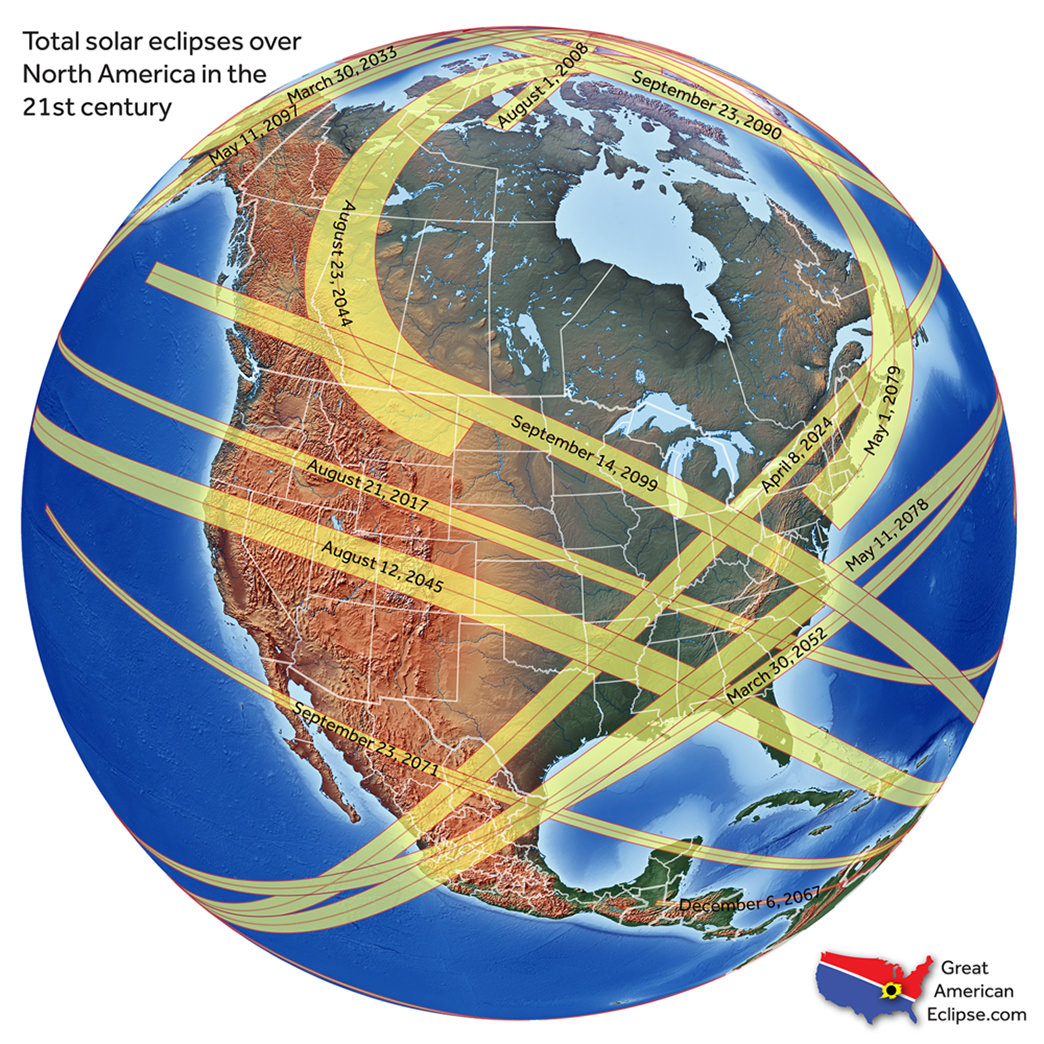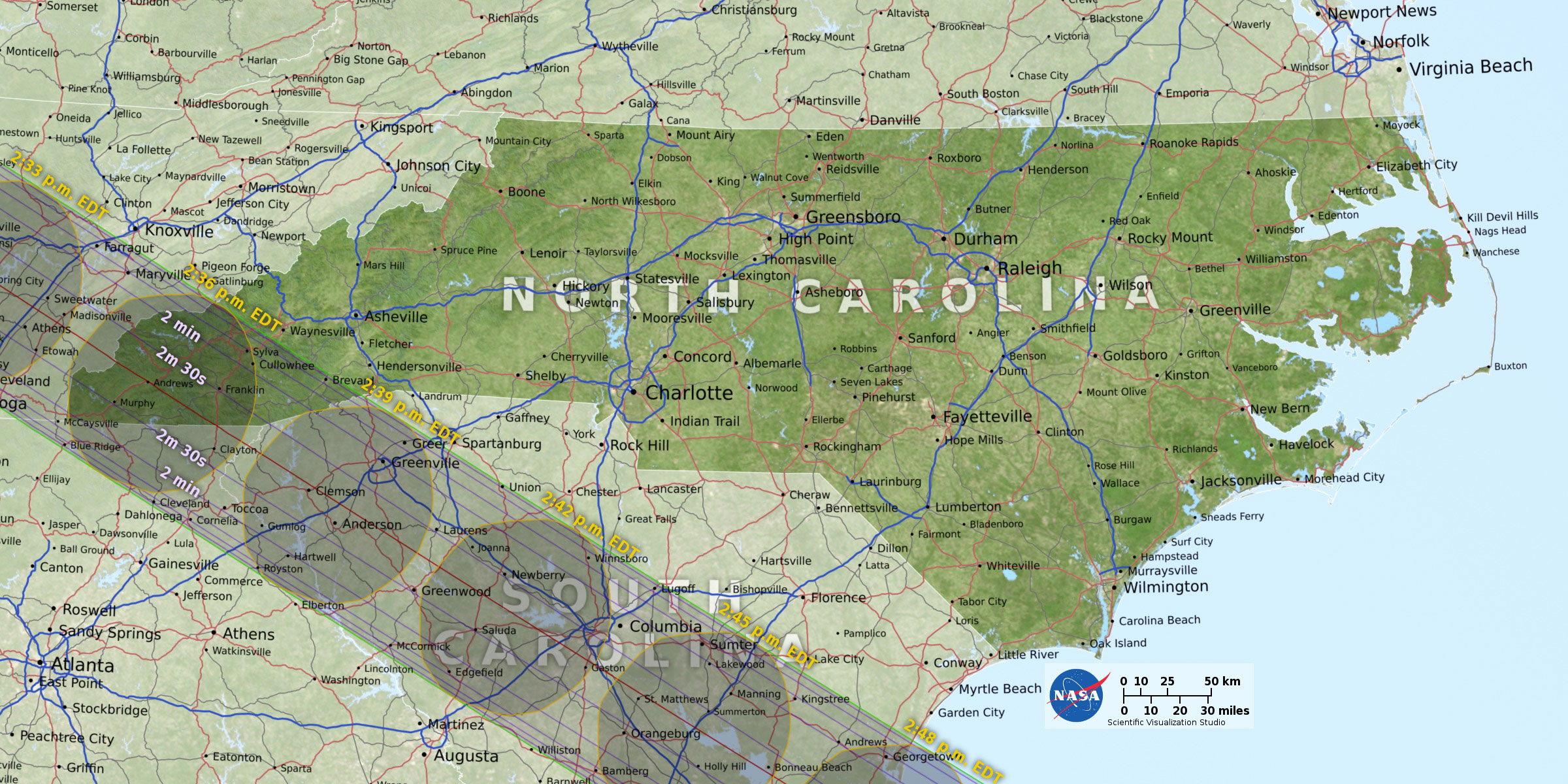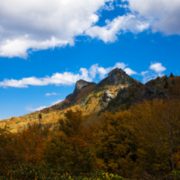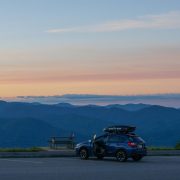Are you ready for the Great American Total Solar Eclipse? It’s rapidly approaching, hitting us full force this coming August 21. Millions of people will be traveling to see the moon cover the sun and all the crazy extras that go along with the phenomenon. The last total solar eclipse crossed the mainland states in 1979, so make sure you get out to see this one, because the next one won’t happen until 2024. Here’s our unofficial guide to everything you need to know.
The Solar Science

The paths of 21st Century North American eclipses. Michael Zeiler, www.GreatAmericanEclipse.com
It sounds like sci-fi, right? “OK guys, one day in the future, the moon is going to completely blot out the sun. Day will turn into night! Stars will shine brighter than the sun! It’s going to be epic!”
So, sci-fi guy is right, but there’s some real science behind the eclipse. This is the time, celestially, when the Earth, moon, and sun are all in line together. The moon will rotate on its path around Earth and pass directly through the middle of our visual path to the sun. In this short period of time, the moon will completely cover the sun—at which point you will look up to see quite the spectacle. Day will have turned into twilight and the sun’s wispy atmosphere will extend around the moon. You’ll see stars in the daytime and colors streaking across the sky. That’s at full coverage. At partial coverage, the sky won’t darken much—but you will be able to get a clearer view of Venus.
Geometry plays an important role in this solar eclipse, too. The moon is about 239 thousand miles away from us here on Earth—which is oddly exactly the right distance to make it look the same size as the (much bigger and much farther away) sun, allowing it to completely cover the light during the eclipse.
Where to Catch a Glimpse

Gearing up to a seriously special celestial event—a time, when the Earth, moon, and sun are all in line together. Thomas Lok
If you’re in the US, you’re lucky—you’ll be able to see anywhere from a total eclipse to 48 percent coverage. The path of totality (where you can see the sun completely covered by the moon) is a much smaller range, though. It goes through only 12 states: Oregon, Idaho, Wyoming, Nebraska, Kansas, Missouri, Illinois, Kentucky, Tennessee, Georgia, North Carolina, and South Carolina. And the totality viewing in those states is limited to very specific 70-mile-wide sections.
NASA has put together a selection of interactive maps allowing you to zoom in on the exact spot you should head to if you want to see the whole shebang. Totality only lasts 2 minutes and 40 seconds at the max with this eclipse, and it’s predicted to be a massive traffic day full of people trying to get to that center line. So go early.
This chart, compiled by Space.com and NASA, outlines totality times in the best cities to see the eclipse, all in local time:

Totality times for each state in the best cities to see the eclipse. Data from NASA
Where to watch in North Carolina
Asheville’s got plenty of viewing parties planned for spots like Pack Square Park and UNC Asheville, but you’ll only get to see the path of totality if you head further west. Tickets for viewing at Clingmans Dome have already sold out and certain areas of Great Smoky Mountains National Park will be closed on August 21. However, if you can turn the once-in-a-lifetime viewing into a weekend, some campsites and hotel rooms may still be available near Sylva, Brevard, Cherokee, or Murphy. Romantic Asheville has rounded up a comprehensive list of spots to watch the eclipse in the mountains.
2017 solar eclipse racing over Great Smoky Mountains National Park from Michael Zeiler on Vimeo.
Tips to See the Best Show














